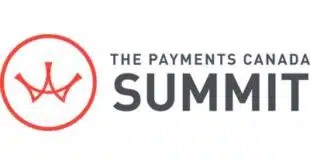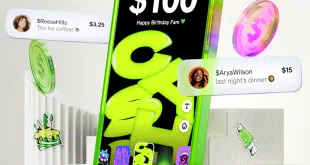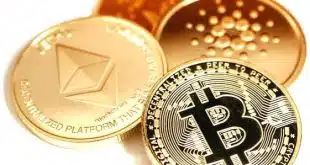You don’t have to look up in the sky to spot a super app. They’re starting to pop up in consumers’ phones everywhere. Here’s why—and why that’s so important.
Most consumers don’t go to bed at night pining away for a new mobile app. They don’t likely request an investment app for Christmas or a shiny new payments app for their birthday. But more and more payments companies are betting that people will want—and spend plenty of time on—an app that combines these and lots of other useful features.
The idea of the super app may have started in China and parts of Southeast Asia, but it’s showing up now globally as fintechs and Internet companies look for ways to attract, keep, grow, and monetize a mobile user base. The developers’ goal is to weave together so many essential capabilities that “you manage your life in the app,” says Patricia Hewitt, principal at PG Research & Advisory Services, a Savannah, Ga.-based consultancy.
Right now, the most prominent examples of this kind of mobile app can be found in China, where a near-absence of wireline connectivity forced developers early on to focus on apps for consumers’ nearly ubiquitous handsets. That gave rise to super apps like Alipay and WeChat Pay, which combined commerce and social media.
Now, the concept has been so refined that a Pinduoduo, for example, can generate constant user attention by offering deep discounts on a wide array of everyday products. The offers become available when users recruit more buyers through the app’s social network. Users cash in on the specials and then look to expand their network of buyers for the next set of offers.
The U.S. market’s long-developed wireline connectivity meant app developers could create specialized apps, such as payments or banking, with less regard for the urge to share the needs or purposes behind the transactions.
And the social aspect here has also been less prominent owing to consumers’ conflicted attitudes toward their money. “Money can be incredibly social at one end of the spectrum and incredibly private at the other end,” notes Josh Woodward, senior director of product management for Google Pay.
Monetizing Eyeballs
Now, that narrow focus may be starting to change as developers begin combining payments with other financial functions. Block Inc.’s Cash App, for example, has in recent years introduced equity investing and Bitcoin trading (Block last month became the new name for Square). And PayPal’s new app, explicitly called a super app, one-ups all others with such features as a savings account and cash-back on spending (see below).
So what’s the point of a super app? What business purpose does it fulfill? In the view of some experts, narrowly focused payments apps are taking on other features—and are likely to continue doing so—because of one, all-important measurement: the monetizable daily active user.
MDAU, these days, is the holy grail of super-app development, say some experts. Its value lies in the fact that it represents irrefutable evidence of consumer engagement as well as revenue potential.
“What you’re looking for as the secret sauce for these brands is engagement,” says Sunil Sachdev, head of fintech at the big payments-technology firm Fiserv Inc. “That’s all they’re trying to do, to monetize those eyeballs.”
And nothing monetizes—and measures—engagement like payments. “Nothing is more quantifiable or measurable than an actual payment or peer-to-peer transfer,” notes Richard Crone, principal at Crone Consulting, a San Carlos, Calif.-based consultancy.
With a plethora of apps in the market, the super app has emerged to win this battle for consumer commitment, Crone and other observers say. The winning formula is to harness e-commerce with fulfillment, a social network, and a payment platform, advises Crone, much as apps like Pinduoduo have done. “Everybody’s leaving money on the table if they don’t have a social capability or a team purchase capability,” he says.
In this regard, one upcoming development to watch may well be Amazon.com’s acceptance of PayPal’s Venmo payment app, which is slated to start this year. The deal is significant in any case because of the sheer size of Amazon’s massive marketplace. But less well-noticed is that the deal incorporates Crone’s three key elements of a super app: commerce, payments, and, because Venmo is also a social network, the social aspect.
“It’s the natural progression of every app to be super,” notes Crone. “If you’re not growing, you’re dying. And the only way to [grow] is to add more utility, and that’s the definition of a super app.”
Simply Commerce
But while some payments apps with roots in the U.S. market may be tending toward super apps, that doesn’t mean they’ll wind up with the business model followed by the massive Chinese and Southeast Asian apps, some observers say.
The core requirement for an American super app, they say, is simply commerce. “I have a hard time envisioning an app like Pinduoduo or WeChat succeeding in a market that has the connectivity [the United States] has,” says Thad Peterson, a senior analyst at Aite-Novarica, a Boston-based consultancy.
Some observers are also less than overwhelmed by PayPal’s claim of the super app designation for its revamped wallet.
“What makes the PayPal app super?” asks Sarah Grotta, who follows payments at Mercator Advisory Group, a Marlborough, Mass.-based consultancy. “It has a lot of payment features but very few features you can’t already get with a solid mobile-banking app, perhaps with the exception of the tie-in to shopping tools.”
For Grotta, the super app status is far too fluid. “When is a super app super?” she asks. “Right now, there are no standards or agreed-upon features.”
The ‘Super User’
At Google, there isn’t much fussing about the proper definition of a super app, says Woodward. Instead, he says, Google Pay is more concerned with easing everyday financial tasks for its users. “We’ve tried to think about where’s the friction for everyday consumers, and how can we remove the friction,” he adds.
That means that, for Google, it’s more important for the app to let users know whether they’ve hit their savings target for the week, for example, than for users to have spent a predetermined length of time in the app. Last fall, Google abandoned a more ambitious banking app called Plex that had been earmarked for inclusion in Google Pay.
Instead, says Woodward, the app is trying to solve everyday problems—what he calls “grumpiness”—for it users. That can mean functions like tracking savings, income, and spending. “The big problem is how to help people stay on top of their money,” he says.
That kind of focus reflects Woodward’s perception that the boundaries between payments and commerce applications are becoming less sharp. “There’s a blurring of the lines that used to be distinct,” he says. “You may see a blurring of payments and personal financial management, or [between] payments and deals and offers.”
But if opinions differ regarding which features an app must offer—how ambitious an app must be—to be seen as “super,” some expert observers have no doubt where the focus should be when the industry looks at apps and users.
“One thing we’ve been squishy about over here [in the United States] is what is a user?” says Hewitt. “Is it someone who opens the app once a year?” If the answer is “no,” it’s because, she says, “the point of a super app is to create the super user.”
Inside PayPal’s Super App
PayPal Holdings Inc. launched a new version of its mobile app in September, with a panoply of new shopping and financial features aimed at broadening the product’s appeal with consumers who are increasingly turning to online commerce.
The event may have marked the first time a U.S. company explicitly used the super-app label that has become so common in Southeast Asia.
The big refresh, the first PayPal has executed on its digital wallet for at least seven years, includes features such as a high-yield savings account via long-time PayPal partner Synchrony Bank, cash back or PayPal shopping credit on spending, consolidated bill payment, direct deposit for early access to wages, and a utility to buy, hold, and sell cryptocurrency.
“It’s a shot across the bow for wallet and payment players like Apple Pay and Google Pay, [and] also traditional financial institutions and neo-banks,” says Thad Peterson, a senior analyst who follows mobile wallets for Boston-based Aite-Novarica Group.
PayPal chief executive Dan Schulman promoted the app at its launch by billing it as a way for consumers to simplify their lives by consolidating a range of key functions behind one access point.
“Our new app offers customers a simplified, secure, and personalized experience that builds on our platform of trust and security and removes the complexity of having to manage multiple financial or shopping apps, remember different passwords, and track loyalty rewards,” Schulman said in a statement.
The new app comes as consumers, who have been increasingly turning to digital wallets, demand apps that are streamlined and easy to use, PayPal says. The company cites statistics from Juniper Research showing that some 4.4 billion consumers will be using digital wallets by 2025, twice the number using them now. Of current users, almost half say simplicity is their number-one reason for using the app.
The new app also arrived as other payments-technology firms are launching new wallets or upgrading existing ones. Square Inc., for example, last fall introduced a payments feature called Cash App Pay for its highly popular Cash App wallet. The app lets users pay merchants by scanning a QR code or by swiping a button on their screens. Square says 70 million active users have adopted Cash App.
PayPal will add over the coming months investment features and yet more payment options for in-store and online shopping, the company said. The latter will include a capability for QR codes, a technology PayPal began deploying in 2020 with chains such as CVS Pharmacy to ease contactless payments.
PayPal’s big and fast-growing account base is an advantage for the company’s new push into digital wallets, experts say. The active account base grew to 416 million by the end of September, a 15% jump compared to the end of the third quarter in 2020. That number includes some 33 million merchants.
But the adoption rate will be key, Peterson cautions. “PayPal has a massive user base and an equally huge merchant base. This could be a game-changer in commerce, payments, and banking, but only if their users adopt it,” he says. “That’s the test and we’ll find out in the next year or so if they passed.”




